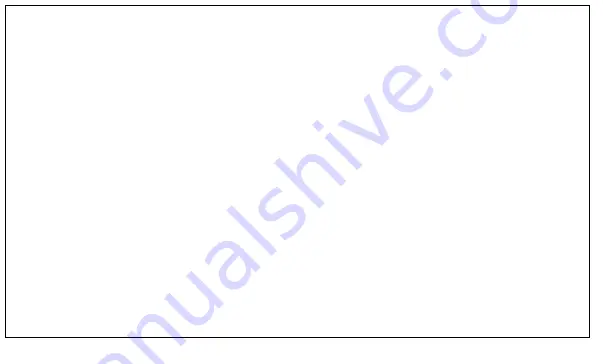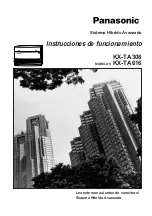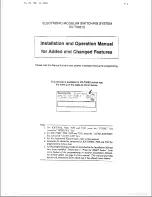
Featuring Revolutionary Target Control
™
(TC
™
) Technology
The SuperScan
™
M2 stud finder features TC
™
technology,
tuned to find wood studs while filtering out metallic false
positive objects such as plumbing, conduit, straps, brackets,
or ducts beneath surfaces. With TC
™
mode, users can utilize
Trust but Verify
technique to help identify “safe-to-drill”
zones between adjacent drywall screws, nails, and protector plates.
Three scanning modes:
•
Target Control
™
(TC
™
)
locates center, edges,
and direction of wood studs (while ignoring metal) up to
3
/
4
" (19 mm) deep.
LCD will be backlit with a pale
blue light.
In TC
™
mode, LoLevel
™
Indicator indicates
low (weak) signal objects, such as plastic water pipes,
plastic sewer drains, or studs deeper than
3
/
4
" (19 mm).
When compared to stud signals, the LoLevel
™
Indicator
may help differentiate studs from false positives.
•
StudScan
locates center, edges, and direction of
both wood and metal studs up to
3
/
4
" (19 mm) deep.
LCD will not be backlit in this mode.
In StudScan mode,
the Signal Strength Indicator uses the same icon as the
LoLevel
™
Indicator. When TC
™
is off, a strong signal is
indicated by full signal strength bars.
•
DeepScan
®
locates center, edges, and direction of
studs (wood and metal) up to 1
1
/
2
" (38 mm) deep.
LCD will be backlit with a green light.
NOTE:
TC
™
and StudScan use the same switch setting but
function differently. StudScan detects both wood and metal
studs during scanning, while TC
™
detects only wood studs
and ignores metal. You can distinguish between the two
modes by the pale blue backlight on LCD in TC
™
mode.
StudScan is not backlit.
MetalliWarning
™
Indicator
will
display when metal is detected or dangerously close in TC
™
,
StudScan, and DeepScan
®
modes.
WIREWARNING
®
DETECTION
The Zircon
®
WireWarning
®
Detection
continuously detects
and alerts for live, unshielded AC (alternating current) wires in
any mode. When live AC voltage is detected, warning indicator
appears and screen starts flashing red until tool is moved
sufficiently away from the live wire. When calibration
begins over an AC wire in any mode, AC icon will flash.
Use extreme caution under these circumstances or
whenever live AC wiring is present.
FIND A STUD IN STUDSCAN MODE
(TC
™
OFF)
1.
Set mode to TC
™
/ StudScan switch.
2.
Hold tool flat against wall,
press Power Button,
release it, then press it again,
holding it down the
second time. Device will calibrate in 1–2 seconds. A short
beep confirms that calibration is complete. If a calibration
error occurs, all icons will flash continuously.
NOTE:
Tool is in StudScan mode (TC
™
off)
when LCD backlight is off.
When TC
™
mode is off,
metal objects may be indicated as a stud and Signal
Strength Indicator will have steady strength bars.
DO NOT MOVE TOOL DURING CALIBRATION.
3.
While holding down Power Button,
slide tool slowly along wall. When tool finds edge of
a stud, Edge Indicator shows.
4.
Continue sliding. When tool
finds center of a stud, Crosshairs
turn on, SpotLite
®
illuminates, and
a beep sounds. (
Figure D
) Mark
spot where stud was found.
5.
Tool automatically recalibrates
when in use. If the two ACT
™
arrows appear on LCD, tool was
calibrated too close to a stud,
then moved away. This is ACT
™
(Auto Correcting Technology)
in action. (
Figure E
)
To return to TC
™
mode, release and
press Power Button again. When the
display is backlit pale blue,
you are back in TC
™
mode.
SCAN IN DEEPSCAN
®
MODE
DeepScan
®
mode is used to scan for deeper studs or
for use with thicker walls. It can detect studs up to
1
1
/
2
" (38 mm) deep.
1.
Set mode to DeepScan
®
.
2.
Repeat steps 2–4 under STUDSCAN MODE section.
NOTE:
When scanning on thicker surfaces, device may
not find edges on surfaces thicker than
3
/
4
" (19 mm).
WARNING
Tool may not detect AC activity if wires
are more than 2" (50 mm) behind the
scanned surface, in concrete, encased in conduit,
behind a plywood shear wall or metallic wall
covering, or if moisture is present in the environment
or scanned surface.
INSTALL 9-VOLT BATERY
Always use a new 9V alkaline battery with an extended
expiration date at least 3 years beyond current date.
Match battery direction to image inside battery cavity.
WARNING
Do not rely exclusively on tool to
locate items behind a surface. Use
other information to help locate items before
penetrating the surface, including construction
plans, visible points of entry of pipes and wiring
into walls, such as in a basement, and standard
stud-spacing practices.
SELECT MODE / POWER UP
Move Mode Selector Switch to desired mode:
TC
™
/ StudScan, and DeepScan
®
.
To activate tool, press and hold Power Button. Device shuts off
1–2 seconds after Power Button is released.
FIND A CLEAN WOOD STUD IN TARGET
CONTROL
™
(TC
™
) MODE
TC
™
is designed to detect wood studs during scanning.
For best results, hold tool as shown and move slowly
when scanning.
Do not touch surface during
calibration or scan.
1.
Set mode to TC
™
/ StudScan switch.
2.
Hold tool flat against wall,
then press and hold Power Button.
(
Figure A
) Device will calibrate
in 1–2 seconds. Proper calibration
is confirmed by a short beep,
a flicker of SpotLite
®
Pointer, and a
flash of icons. If a calibration
error occurs, all icons will
flash continuously.
NOTE:
Screen will have a pale
blue backlight in TC
™
mode.
DO NOT MOVE TOOL
DURING CALIBRATION.
3.
While holding down
Power Button, slide tool slowly
along wall. When tool finds edge
of a stud, Edge Indicator shows.
(
Figure B
)
4.
Continue sliding. When tool
finds center of a stud,
Crosshairs show and SpotLite
®
illuminates. Mark spot where stud
was found. (
Figure C
)
5.
Tool automatically recalibrates
when in use. If the two ACT
™
arrows appear on LCD, tool was
calibrated over a stud, then moved away. This is ACT
™
(Auto Correcting Technology) in action.
NOTE:
LoLevel
™
Indicator will display rapidly cascading
bars when device senses a sustained weak signal,
indicating a false positive object may be present.
6.
Use the
Trust but Verify
technique for finding
drywall screws or nails up and down stud to confirm
that you have located a wood stud. Other objects,
such as plastic plumbing pipes, do not contain nails or
drywall screws. (See important note under BEFORE YOU
BEGIN
for more information on this procedure.)
WARNING
DO NOT ASSUME THERE ARE NO LIVE
ELECTRICAL WIRES IN THE WALL.
DO NOT TAKE ACTIONS THAT COULD BE
DANGEROUS IF THE WALL CONTAINS A LIVE
ELECTRICAL WIRE. ALWAYS TURN OFF
THE ELECTRICAL, GAS, AND WATER SUPPLIES
BEFORE PENETRATING A SURFACE. FAILURE TO
FOLLOW THESE INSTRUCTIONS MAY RESULT IN
ELECTRIC SHOCK, FIRE, AND/OR SERIOUS INJURY
OR PROPERTY DAMAGE.
WORKING WITH DIFFERENT MATERIALS
Wallpaper
Tool functions normally on walls covered with
wallpaper or fabric, unless the materials are metallic foil,
contain metallic fibers, or are still wet after application.
Wallpaper may need to dry for several weeks after application.
Freshly painted walls
It may take a week or longer to
dry after application.
Lath and plaster
This tool is not designed to scan over
lath and plater.
Highly textured walls or acoustic ceilings
When scanning a ceiling or wall with an uneven surface,
place thin cardboard on the surface to be scanned and
scan over the cardboard in DeepScan
®
mode.
Wood flooring, subflooring, or gypsum drywall
over plywood sheathing
Use DeepScan
®
mode and
move the tool slowly. This tool cannot scan for wood
studs and joists through carpet and padding.
NOTE:
Sensing depth and accuracy can vary
depending on scanning environment conditions
such as mineral content, moisture, texture,
and consistency of the wall materials.
Electrical wiring and pipes
Depending on the
proximity of electrical wiring or pipes to the wall surface,
tool may detect them in the same manner as studs.
Caution should always be used when nailing,
cutting, or drilling in walls, floors, and ceilings
that may contain these items.
Studs
Studs are normally spaced 16" or 24" (40 cm or 60 cm)
apart on center and are 1
1
/
2
" (38 mm) wide.
Anything closer together, or of a different width, may not
be a stud.
Figure B
Figure D
BEFORE YOU BEGIN
ZIRCON
®
STUD FINDERS WORK BY SENSING DENSITY CHANGES BEHIND THE WALL. OTHER OBJECTS CAN
BE DETECTED, ESPECIALLY IF THEY ARE VERY CLOSE TO THE WALL.
DO NOT ASSUME THAT EVERYTHING
DETECTED IS A STUD.
- Always use a new 9V alkaline battery with an extended expiration date at least 3 years beyond the current date.
Match battery direction to the image inside of battery cavity.
- Do not rely exclusively on the tool to locate items behind a surface. Use other information to help locate such items
before penetrating the surface, including construction plans, visible points of entry of pipes, wiring into walls such as
in a basement, and standard stud-spacing practices.
- Always start your scan in Target Control
™
(TC
™
) mode, which scans through standard single layer drywall up to
3
/
4
" (19 mm) deep.
- Always scan for studs at several different heights on the wall and mark the location of every target indicated by the
stud finder. This is called “mapping the wall.” Pipes and other objects will likely not give consistent readings from floor
to ceiling, as a stud would.
- Studs normally run from floor to ceiling, except above and below windows and above doors.
- Readings should always be consistent and repeatable.
- Zircon
®
stud finders are recommended for interior use only.
- Other objects commonly contained in walls, floors, or ceilings are water pipes (plastic and metal), gas lines, firestops,
and electrical wiring.
- Sensing depth and accuracy can vary depending on scanning environment conditions, such as mineral content,
moisture, texture, and consistency of the wall materials.
- Depending on the proximity of electrical wiring or pipes to the wall surface, tool may detect them in the same
manner as studs.
Caution should always be used when nailing, cutting, or drilling in walls, floors, and ceilings that could
contain these items. Use extreme caution under these circumstances or whenever live AC wiring is present.
- Studs are normally spaced 16" or 24" (40 cm or 60 cm) apart on center, are normally 1
1
/
2
" (38 mm) wide, and may
be separated by firestops. Anything closer together, or of a different width, may not be a stud.
IMPORTANT:
Trust but Verify
is a technique that can help indicate “safe-to-drill” zones to minimize hitting
existing metals on a stud, such as nails, screws, and protector plates. When the Crosshairs show in TC
™
mode,
run tool vertically up and down the stud. The stud indicators (Crosshairs, Edge Indicators, Target Indicator Bars,
Target Spotlight, and SpotLite
®
Pointer) will all turn off over screws and other metal, then turn on again when the
stud is free from metal. The "safe-to-drill" zones are typically between adjacent drywall screws, nails, or protector
plates, assuming the builder properly installed metal protector plates on the stud, and over plumbing and electrical.
If stud indicators do not disappear when running vertically up and down the object in TC
™
mode, the absence of
drywall screws, nails, and protector plates indicates this could be a non-metallic object such as plastic plumbing or
PEX tubing, and should not be mistaken for a stud.
SuperScan
™
M2
TROUBLESHOOTING & CONSTRUCTION TIPS
SITUATION
LIKELY CAUSE
SOLUTION
Tool detects objects other
than studs in StudScan
mode or finds more objects
that look like studs than
should be there.
Electrical wiring
and metal or plastic
pipes may be
near, or touching,
the back of the
wall surface.
• Check for other studs equally spaced to either side at
16" or 24" (40 cm or 60 cm) and check for the same stud at
spots directly above or below the first scan area.
• Standard studs measure approximately 1
1
/
2
" (38 mm)
between edges. Anything smaller or larger is likely not a stud
(unless near a door or window).
Studs are continuously
detected near windows
and doors.
Multiple studs are
in use.
Double and triple studs are sometimes used around doors
and windows. Headers are used above them. Detect outer edges
so you know where to begin.
Electrical wires suspected
but none detected.
Wires deeper than
2" (50 mm) from
the surface might
not be detected.
If there is an outlet switch, turn it to ON position
while scanning, but turn OFF when working near the wires.
Use extra caution if the area has plywood, thick wood backing
behind drywall, or walls that are thicker than normal.
Wires may not
be live.
Plug a lamp into the outlet and turn it on to test whether wires
are live.
LCD screen flashes
continuously when trying
to find stud.
Tool is experiencing
oversaturation of
exposure to metal.
Switch to TC
™
or StudScan mode to lessen sensitivity to metal.
NOTE:
Tool may not beep over studs 1" (25 mm) or deeper
when doing this.
Low Battery Indicator on.
Low battery.
Install a new 9V alkaline battery with an extended expiration date.
Low Battery Indicator
flashes and tool does
not operate.
Dead battery.
Install a new 9V alkaline battery with an extended expiration date.
EN
FCC Part 15 Class B Registration Warning: This device complies
with Part 15 of FCC Rules. Operation is subject to the following
two conditions: (1) this device may not cause harmful interference,
and (2) this device must accept any interference received,
including interference that may cause undesired operation.
LIMITED LIFETIME WARRANTY
Zircon Corporation (“Zircon”) warrants to the original purchaser
(or original user by gift) that this product will be free from
defects in materials and workmanship for its useful life (not to
exceed twenty years from date of purchase).This warranty is
limited to the electronic circuitry of the product, and specifically
excludes consumable parts, including batteries, and software,
even if packaged with the product. Defects caused by abuse,
modification, handling contrary to these instructions, other
unreasonable use, or neglect are not covered under this warranty.
No liability is accepted for normal wear and tear and minor
defects which do not detract from the function of the product.
THIS LIMITED LIFETIME WARRANTY IS IN LIEU OF ALL
OTHER WARRANTIES, EXPRESS OR IMPLIED, INCLUDING THE
IMPLIED WARRANTIES OF MERCHANTABILITY AND FITNESS
FOR A PARTICULAR PURPOSE. IN NO EVENT WILL ZIRCON
BE LIABLE FOR ANY SPECIAL, INDIRECT, INCIDENTAL OR
CONSEQUENTIAL DAMAGES RESULTING FROM POSSESSION,
USE, OR MALFUNCTION OF THIS PRODUCT. NO OTHER
REPRESENTATIONS OR CLAIMS OF A SIMILAR NATURE WILL
BIND OR OBLIGATE ZIRCON.
Some states do not allow limitations on certain implied warranties
and/or the limitation on incidental or consequential damages, so
the above limitations and exclusions may not apply to you. This
warranty gives you specific legal rights, and you may also have
other rights which vary from state to state. This Limited Lifetime
Warranty applies only to products purchased within the United
States of America (USA) and Canada. For warranty applicable
to products purchased in all other geographical areas,
see www.zircon.com/warranty.
Any in-warranty defective product returned to Zircon,
freight prepaid, along with dated purchase receipt and $10.00
to cover shipping and handling, will be repaired or replaced,
at Zircon’s option. If the returned product is no longer available,
Zircon may replace the product with a similar product of
similar function. This is your sole and exclusive remedy for
breach of this Limited Lifetime Warranty. To return product,
call the Zircon Customer Service number below to request an
RMA number and return product with shipment tracking to:
Zircon Corporation
Attn: Returns Department
1580 Dell Avenue
Campbell, CA 95008-6992 USA
Include your name, return address, RMA number, and package
tracking number. Allow 4–6 weeks for delivery.
If you do not agree to the terms of this Limited Lifetime Warranty,
you may not use this product and must promptly return it to
the retailer, along with a dated purchase receipt within 30
days of purchase for a refund of the purchase price.
Customer Service: 1-800-245-9265 or 1-408-963-4550
Monday–Friday, 8:00 a.m.–5:00 p.m. PST
www.zircon.com • [email protected]
©2020 Zircon Corporation • P/N 71530 • Rev A 10/20
ACT, ColorTrip, DeepScan, LoLevel, MetalliWarning, SpotLite,
SuperScan, Target Control, TC, WireWarning, and Zircon are
trademarks or registered trademarks of Zircon Corporation.
Visit www.zircon.com for the
most current instructions.
Scan QR code for more information.
Figure C
Figure A
Figure E
SpotLite
®
Pointer
Mode Settings:
TC
™
/ StudScan
DeepScan
®
Battery
Door Tab
Power
Button
ColorTrip
®
Display
Mode
Selector
Switch
Edge Indicators
Scan
Mode
Indicator
Crosshairs
LoLevel
™
/ Signal
Strength Indicator
MetalliWarning
™
Indicator
Low
Battery
Indicator
WireWarning
®
Detection
Indicator
ACT
™
(Auto
Correcting
Technology)
Arrows
Target
Indicator
Bars
Target
Spotlight
Advanced Stud Finder

























